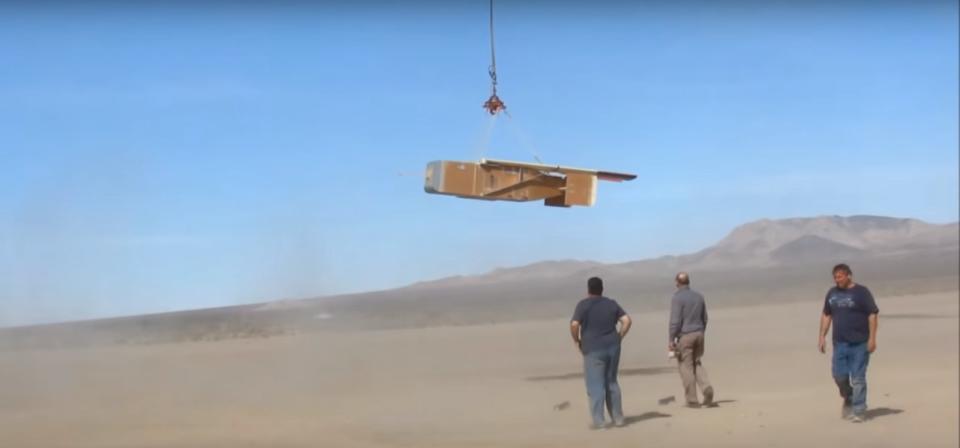Disposable delivery drones pass test with US Marines
The one-time use drones can carry more than 1,000 pounds of supplies.
The US military is testing delivery drones that can transport supplies over long distances and be thrown away after each use. Made of cheap plywood, the bigger version of the two gliders being tested can carry over 700 kilograms, or roughly 1800 pounds. As reported in IEE Spectrum, the scientists at Logistic Gliders, Inc. revealed that their gliders just successfully completed a series of tests with US Marines. If cleared for mass production, the LG-1K and its bigger counterpart, the LG-2K, could cost as little as a few hundred dollars each.
Using unmanned aircraft for delivery is an idea both the military and private sector have explored for years. Traditional aircraft guzzle fuel, cost money to purchase and maintain and require a human pilot. An unmanned aerial device doesn't require any of these things. Companies like Amazon flirted with the idea of using drones to speed up package delivery, but couldn't overcome logistical hurdles. While far away from being suitable for civilian use, these latest delivery gliders may be a step in the right direction.
The one caveat is that these gliders have to first be launched from a larger aircraft. The gliders can then fly, either on their own or through radio control, and then belly land or release a parachute. The gliders travel at a low altitude and don't need an airfield-like landing zone, which as a paper on them mentions, gives them a lot of flexibility. The unmanned aircraft can fly into urban environments, small clearings, or through forest and jungle canopies.
In an interview with Engadget, principal investigator Marti Sarigul-Klijn explained that gliders would outpace both ground-based delivery drones and be cheaper than the current system of air-dropping supplies by parachute. "Gliders dropped from a cargo aircraft could greatly outdistance any ground based unmanned aerial vehicle (UAV) designed for cargo logistics since the actual cargo delivery distance is the sum of the carrier aircraft's range plus the glider's range," wrote Sarigul-Klijn in an email. "A carrier aircraft such as the C-17 can easily fly 2,000 nautical miles and back. Although most airdrop systems including parachutes are reused during training, all airdrop systems are expended during combat missions because it is almost impossible to retrieve them."
Logistics Gliders, Inc. plans to continue testing its disposable gliders this year under its contract with the Marines. If successful, the gliders would be a low-cost way for the military to air-drop supplies across multiple sites or even transfer humanitarian aid across political borders. You can watch a video of a test of the LG-2K below:



